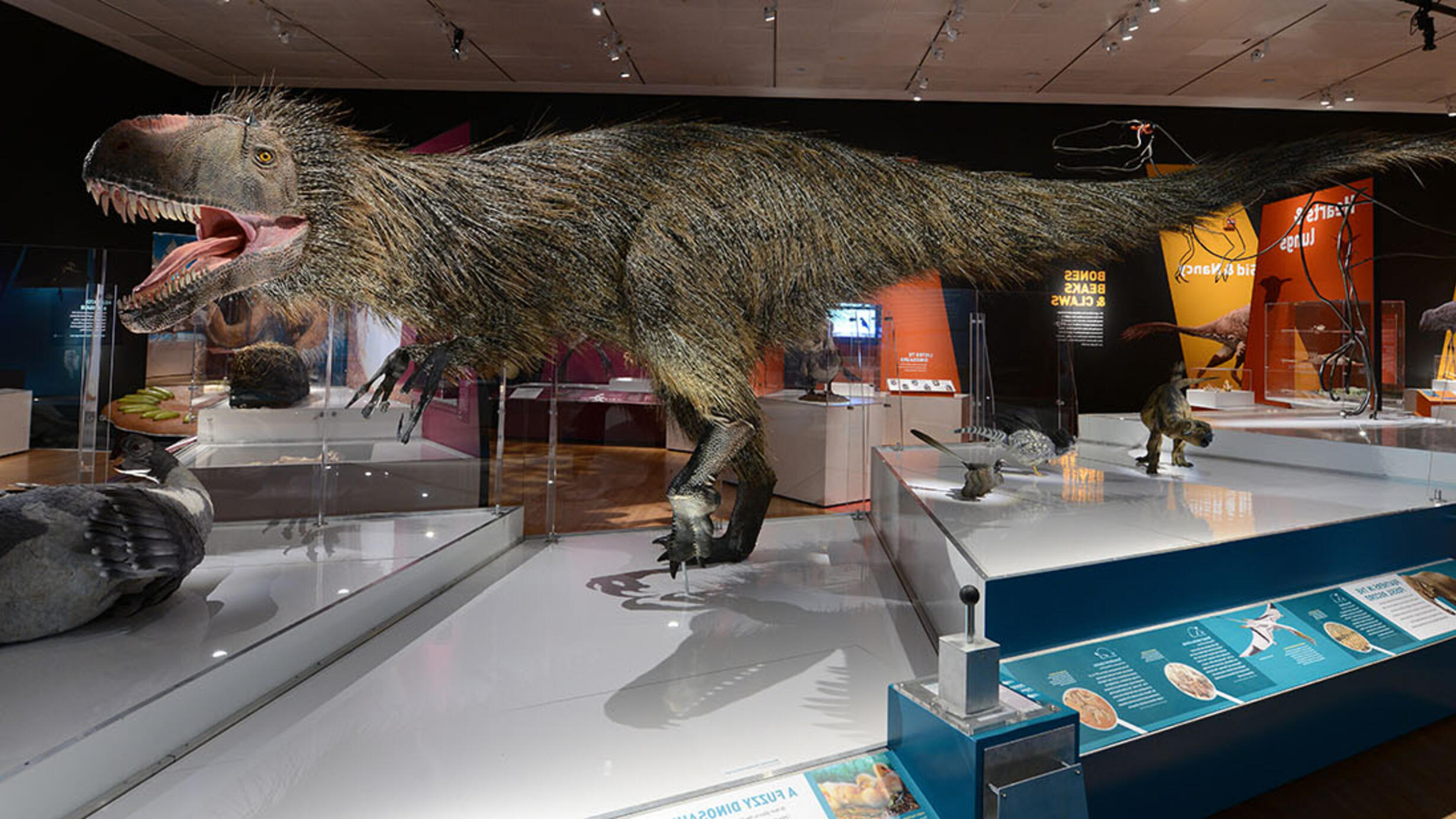Dinosaur Feathers
Part of the Dinosaurs Among Us exhibition.
 A Yutyrannus model in Dinosaurs Among Us.
A Yutyrannus model in Dinosaurs Among Us.Roderick Mickens/© AMNH
Big, bad... and feathered. Yutyrannus huali weighed 1.5 tons and was a fearsome predator like its cousin T. rex. It also sported a shaggy coat of the filaments called “proto-feathers.” Birds are the only animals alive today with feathers—but 150 million years ago, it was a different story. Early birds had feathers, but so did dinosaurs of all shapes and sizes. One reason? Feathers are one of the most useful skin coverings that ever evolved.
Zhao Chuang; courtesy of Peking Natural Science Organization
Feathers come in different colors, sizes and shapes, and serve a wide range of functions. Peacocks display them to attract mates, penguins rely on them to reduce drag underwater, and herons create shade with them, making it easier to see prey beneath the water's surface. Quite often, feathers have nothing to do with flight.
Courtesy of Wikimedia Commons
Thousands of feathered dinosaurs have been discovered, with most belonging to the theropod branch of the family tree. Researchers have also found evidence of feathered ornithischians—a branch only distantly related to birds. What about sauropod dinosaurs, like The Titanosaur?
©AMNH/D. Finnin
Some scientists think all dinosaurs, including sauropods, had feathers—just as all mammals have at least some hair. Large mammals such as elephants, though, have very limited hair. Similarly, sauropods may not have had many feathers, making them unlikely to be preserved in fossils.
©AMNH/R. Mickens
Paleontologists are continually discovering new examples of feathered fossils. Discoveries in the Liaoning Province of China, such as Sinornithosaurus, pictured above, have transformed our understanding of the transition from feathered dinosaurs to birds.
Fossils from the region tend to be exquisitely well preserved, showing delicate features including feathers. Many feathered dinosaurs have been discovered there in the last 15 years—and some of the most important ones are on display as models or casts in Dinosaurs Among Us.